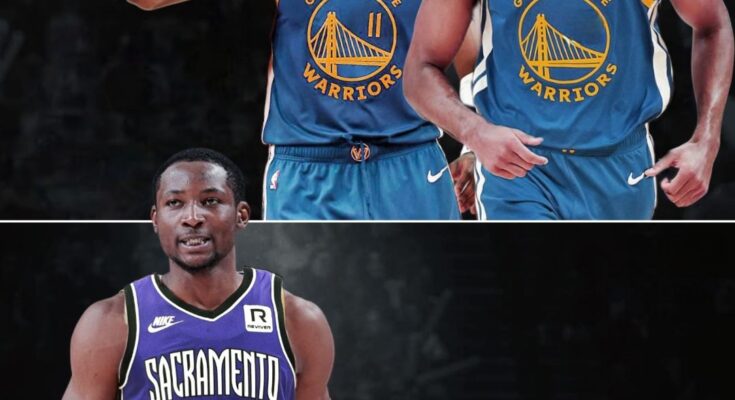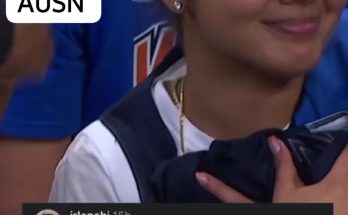The Golden State Warriors, one of the most dominant teams in recent NBA history, find themselves at an intriguing crossroads regarding the future of Jonathan Kuminga. Kuminga, a young and highly talented forward, has shown flashes of brilliance and tremendous potential since being drafted. However, the Warriors initially hesitated to entertain any trade discussions involving him, especially with division rivals like the Sacramento Kings. This stance, rooted in their confidence in Kuminga’s development and his fit within their core alongside Stephen Curry, Klay Thompson, and Draymond Green, seemed firm. Yet, the Warriors’ front office is now reportedly reconsidering this position due to interest in two particular players who could offer immediate and tangible benefits to the team. This possible shift in strategy speaks to the evolving nature of NBA team-building, where patience with young talent often gives way to calculated risks when the right pieces become available.
The Warriors have been a model franchise in terms of managing their roster, blending seasoned veterans with young talent, and maintaining a culture that emphasizes winning. Kuminga, as a second overall pick in the 2021 NBA Draft, represents the future, but he has not yet fully realized the impact the Warriors anticipated. His raw athleticism and scoring ability are undeniable, but inconsistencies on both ends of the floor have kept him from becoming a reliable, full-time contributor. While the Warriors have remained patient, believing that Kuminga’s ceiling is high and that his game will mature with time, the window for maximizing their current championship window is narrow. Stephen Curry, their perennial All-Star, is in his mid-30s, and the team’s window to contend remains limited, especially with an increasingly competitive Western Conference. This urgency is a key factor behind why the Warriors might be willing to reconsider trading Kuminga if the right deal materializes.
The Sacramento Kings, one of their fierce division rivals, have emerged as a key player in this narrative. The Kings, with their own young core led by De’Aaron Fox and Domantas Sabonis, are also trying to push past their historical struggles and become playoff contenders. The idea of sending Kuminga to Sacramento in a sign-and-trade deal makes sense from a logistical standpoint because such trades allow the Warriors to maintain some control over Kuminga’s destination and maximize their return. However, from a rivalry perspective, it has always been a tough pill to swallow to strengthen a direct competitor. Nonetheless, the allure of acquiring players who can help the Warriors immediately has pushed them to explore this option more seriously.
The two players the Warriors have their eyes on from the Kings roster could significantly alter their trajectory. Although exact names haven’t been officially disclosed in most reports, the speculation centers on players whose skill sets fill gaps in Golden State’s roster construction. The Warriors, known for their shooting prowess, defensive intensity, and ball movement, have struggled at times with depth in their frontcourt and consistency in playmaking beyond their superstar guards. These players from Sacramento presumably offer solutions in these areas, potentially providing the Warriors with the complementary skills necessary to remain championship contenders.
One of these players is believed to be a versatile forward or big man capable of spacing the floor and defending multiple positions. The Warriors have long prioritized versatility in their lineup — players who can switch defensively and contribute offensively from various spots. While Kuminga fits this mold in theory, his inconsistency has sometimes made it difficult for the Warriors to rely on him as a stable piece. Acquiring a proven player from Sacramento who can slide into Golden State’s system without a steep adjustment period could be invaluable. Such a player would help balance the team, particularly if he can provide shooting and rebounding, two areas where the Warriors have occasionally needed reinforcements. This new addition would give the Warriors more tactical flexibility, especially when deploying smaller or bigger lineups depending on matchups.
The second player reportedly under consideration is likely a guard or a wing who brings strong playmaking and defensive skills. The Warriors have always thrived with guards who can create their own shot and facilitate for others, complementing Curry’s unique offensive style. Adding a guard or wing from the Kings who is comfortable with the ball and can help take some of the creative load off Curry would be a major boon. Additionally, such a player could bring defensive tenacity, another hallmark of the Warriors’ championship teams. In an era where perimeter defense and switching are vital, a player who fits those criteria and can also contribute offensively could be the missing link the Warriors need to push deeper into the playoffs. This is especially important as the Warriors face stiff competition from other teams who have improved their rosters through free agency and trades.
Beyond individual skill sets, the potential sign-and-trade involving Kuminga carries broader implications for team chemistry and the Warriors’ long-term plans. Golden State has shown an ability to integrate new players quickly into their system, given the culture cultivated by head coach Steve Kerr and the leadership of Curry and Green. However, the departure of a promising young player like Kuminga is never without risk. The team must weigh the immediate benefits of the trade against the cost of losing a player who, if developed properly, could become a cornerstone alongside their existing stars. The decision also reflects the franchise’s commitment to winning now rather than waiting for a gradual rebuild or development cycle. In a league where timing is everything, Golden State is signaling a willingness to be aggressive and proactive in maintaining their competitive edge.
The Kings, on the other hand, stand to benefit by acquiring Kuminga. For Sacramento, adding a young, high-upside player like Kuminga could accelerate their rebuild and give them a dynamic forward who fits well alongside Fox and Sabonis. Kuminga’s athleticism and scoring ability could mesh with the Kings’ up-tempo style, potentially making Sacramento more dangerous in the Western Conference. This mutual interest creates a compelling scenario where both teams could benefit, making the sign-and-trade a plausible and attractive option.
There are, of course, other considerations such as salary cap implications, contract lengths, and the timing of the trade. A sign-and-trade would allow the Warriors to offer Kuminga a contract extension that the Kings couldn’t simply match through free agency. This financial flexibility is a key advantage for Golden State, enabling them to maximize the value of their assets while maintaining roster balance. The ability to negotiate with Kuminga directly as part of the trade ensures that the Warriors can protect their interests and avoid losing him for nothing in free agency. At the same time, the Kings gain a young talent locked in on a long-term deal, providing roster stability.
In addition to the individual players involved, this potential trade reflects larger trends in the NBA regarding the value of young talent versus proven contributors. Teams are increasingly balancing the desire to build through youth with the urgency to win in the present. The Warriors’ openness to reconsider their stance on Kuminga is emblematic of this tension. While patience is often rewarded, circumstances such as injuries, player development timelines, and the strength of conference opponents push teams to be more flexible. The Warriors’ willingness to listen to offers involving Kuminga suggests that they are prioritizing roster upgrades that can deliver immediate impact, especially with key veterans aging and new contenders emerging in the league.
Furthermore, the impact of this trade could extend beyond just the Warriors and Kings. Other Western Conference teams will watch closely how Golden State maneuvers their assets and whether they can extract maximum value from Kuminga. The ripple effects might influence how other teams approach their young players and potential trades with division rivals. Trades between teams in the same division or conference, especially rivals, always carry added weight because of the competitive balance at stake. If the Warriors succeed in acquiring two high-impact players while parting with a promising but inconsistent talent, it could set a precedent for how teams approach such deals in the future.
From a fan perspective, the idea of trading Kuminga to a rival like Sacramento is bittersweet. Warriors fans have followed Kuminga’s development and hope to see him flourish as part of their team’s next era. However, the allure of acquiring two quality players who can help win now also excites fans who want to see Golden State continue to compete at the highest level. This tension between loyalty to a young player and the pragmatism of team-building creates a compelling narrative for the franchise moving forward.
In conclusion, the Golden State Warriors’ reconsideration of a Jonathan Kuminga sign-and-trade to the Sacramento Kings is a significant development fueled by the prospect of acquiring two impactful players who fit their immediate needs. This potential shift underscores the complex balance NBA teams must strike between developing young talent and seizing opportunities to strengthen their roster for championship contention. With the Warriors’ championship window still open but closing, the urgency to improve now could outweigh the patience typically afforded to Kuminga’s growth. Meanwhile, the Kings stand to gain a young, high-upside player who could accelerate their progress. Ultimately, this scenario highlights the dynamic nature of NBA roster management and the strategic calculations teams make in pursuit of sustained success. Whether the trade materializes or not, it marks a pivotal moment in how the Warriors view their future and the players who will shape it.



